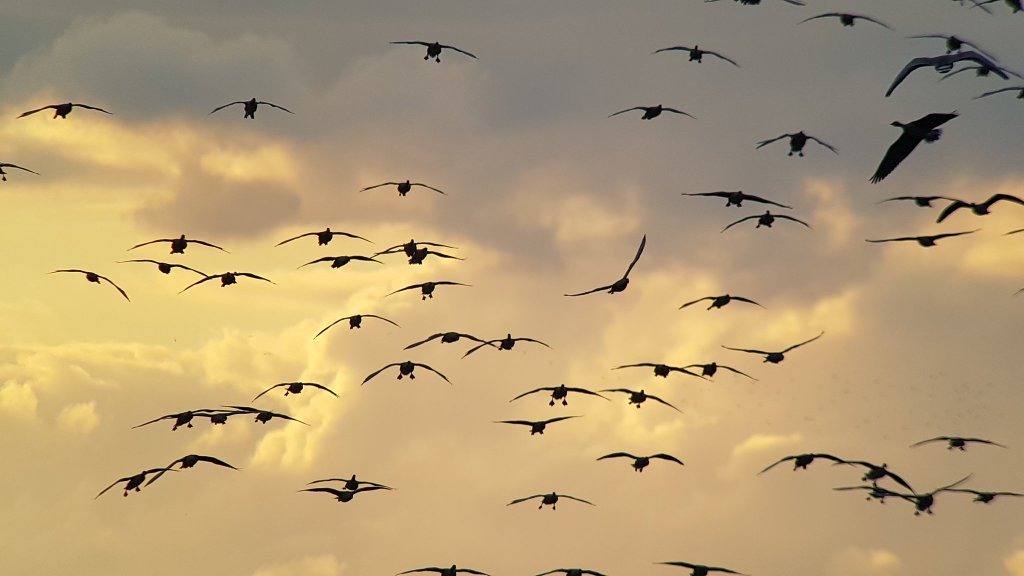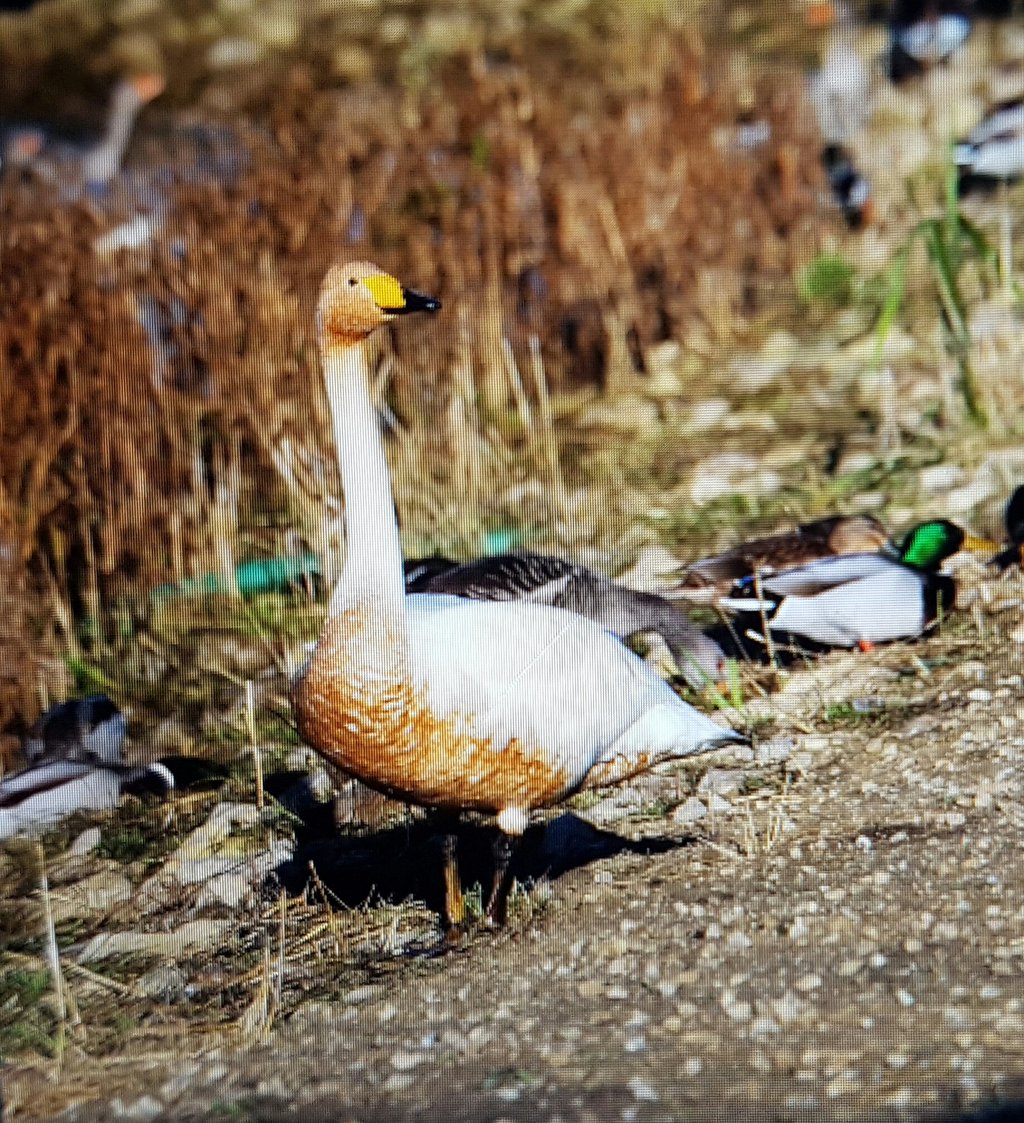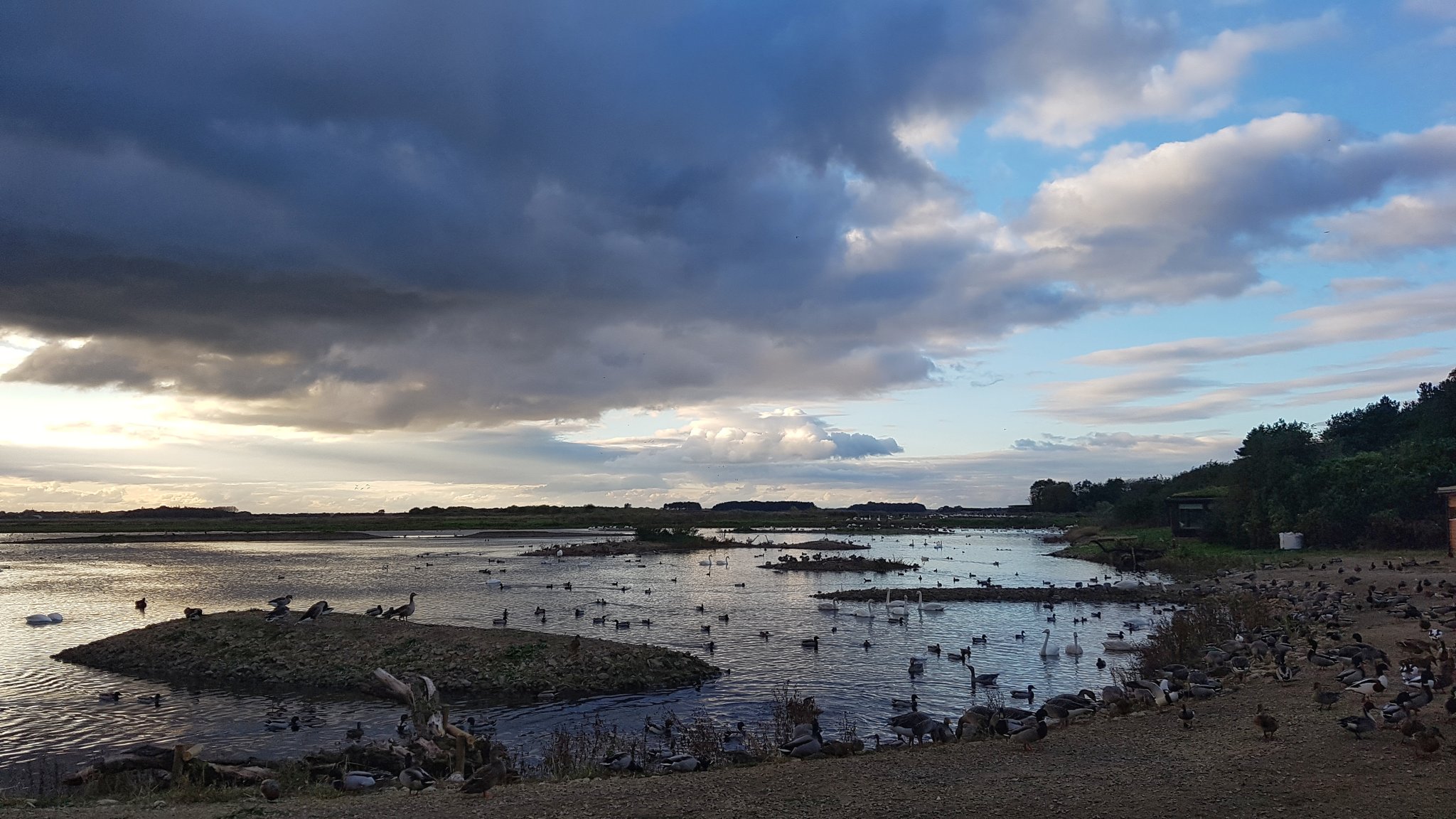30050 Pink-footed Geese
Yesterday's roost count of 30050 Pink-footed Geese was the highest of the Autumn so far. The count was part of the coordinated occuring in Lancashire (and elsewhere). The complete figures for Lancashire haven't been complied just yet but the final count will be around 92000, similar to the count at the same time last year.

Not just Pink-footed Geese as two European White-fronted Geese (seperate birds) were seen in the flock today, and apparently yesterday.
Again around 400 Whooper Swan including some birds with staining from the iron rich waters on the breeding grounds (see below)

First Short-eared Owl of the autumn flushed by a Marsh Harrier to the right of the Ron Barker Hide then flew towards Outer Sunley's.
Raptors included 3+ Common Buzzard, Peregrine, 2 Kestrel and 2 Sparrowhawk.
Waders included 700+ Lapwing, 20+ Ruff, 30+ Snipe.
A Cetti's Warbler was seen and heard from the Harrier Hide yesterday.
The first Goldeneye of the winter a female type was seen on the Mere today. At least 7 Pochard there too.
A few Fieldfare were seen from the Gladstone Hide. Redwing also seen today.
Kingfishers again from the Ron Barker Hide.
As usual it should be possible to see at least 50 species of bird in a day without too much effort, although a telescope is very useful from most of the hides.
If you are visiting the reserve, pop in to the in focus shop (next to the Discovery Hide) where we have a full list of birds, and should be able to point you in the right direction to get the most out of your visit.




